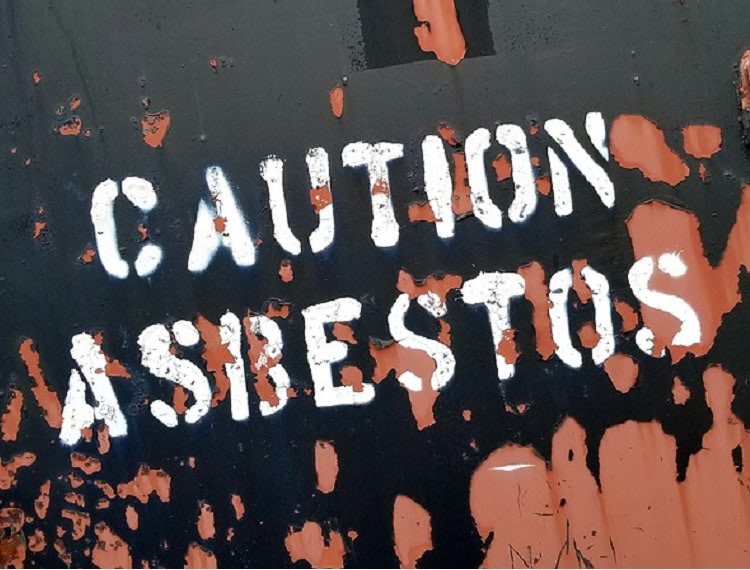Asbestos in Schools and Colleges: Important Information for Duty Holders

It might come as a shock to learn that asbestos still exists in schools and colleges today, which are meant to be safe learning environments.
It’s important to keep staff and students safe, so here, we’ll take a look at what asbestos actually is and procedures that should be in place for schools and how we can make sure the next generation are in safe learning environments.
The problem
Asbestos was a building material used extensively throughout the UK from the 1950s through to the 80s. However, the harmful health effects weren’t known as they are now. Asbestos itself wasn’t banned until the end of 1999. It’s well established that severe or even fatal diseases can develop when asbestos fibres are released and inhaled, often developing 30 to 40 years after exposure.
Because of the wide use across the country in all manners of buildings and facilities, asbestos was laid in schools — remains in many of these buildings today.
Asbestos Audit, who provides asbestos surveys across the North of England and Scotland, said that they are regularly called out to school buildings with asbestos in various states of repair. The main problems they come across are:
- Old or poor-quality surveys have often not found the asbestos existing in the buildings.
- Asbestos maintenance and regular re-inspection aren’t carried out periodically or have been forgotten, increasing the likelihood of health risks.
- Paperwork has been lost when staff has changed or moved office.
- There is little knowledge of the regulations and requirements or it is outdated, leaving the school liable to any harm.
- There has been no management of contractors working on schools which has led to accidental damage to the asbestos.
- Not knowing who the duty holder of the school is and who is responsible for the asbestos.
Problems like this shouldn’t be occurring in our day and age.
So, what procedures should a school have in place for dealing with asbestos?
Any school buildings built before 2000 fall under the Control of Asbestos Regulations 2012. This act places a legal responsibility on the duty holder to ensure that appropriate asbestos management action is taken, and buildings are safe. Duty holders who fail to follow through with the legal requirement can be faced with legal action.
Asbestos management actions usually include:
- Carrying out asbestos surveys and re-inspections of asbestos materials identified to assess the risk and actions required.
- Implementing an asbestos management plan to identify and manage all the required actions and delegate who is responsible for carrying them out.
- Carrying out removal or reduction work.
- Review the existing asbestos management plan and make changes when necessary, for example when regulations, site conditions, duty holders, staff, or actions change.
- Make sure that staff are correctly trained and aware of asbestos on site.
- Make sure both contractors and visitors are safe when present in the building.
- Seek specialist advice when it is needed.
With asbestos being a serious concern that must be addressed, responsibility of others’ health can feel overwhelming, especially if you’re not knowledgeable about the area. Many teachers and school staff are tasked with not only teaching but building maintenance that can cause a lot of stress. If you’re involved in carrying out asbestos duties, seek specialist advice to take the pressure off and to make sure you’re doing everything within your legal duty, so you are confident that you’re making the right decisions.
Guidance to help schools and responsible bodies use the AMAP portal to submit an assurance declaration about compliance with asbestos regulations.
Documents
Asbestos management assurance process (AMAP) user guide
Ref: DFE-00328-2018PDF, 1.2MB, 22 pages
Asbestos management assurance process (AMAP) portal access guide
HTML
Details
Accessing the AMAP portal
Schools and responsible bodies, who were unable to participate in the first collection, can use the AMAP portal to send school information and an assured response to the Department for Education.
Use the AMAP portal to submit information and your assurance declaration.
AMAP process
The AMAP meets the department’s commitments set out in the March 2015 review of asbestos management in schools, enhancing scrutiny on those responsible for managing asbestos in schools.
You are expected to complete the AMAP if you are a responsible body.
-
Responsible body: the main employer of staff at state-funded schools and academies.
-
State-funded schools and academies: maintained nursery schools, maintained schools (including primary, secondary and middle schools), maintained special schools and academy special schools, pupil referral units, academies and free schools and non-maintained special schools.
This guidance is for anyone who is responsible for the management of asbestos in the education estate and compliance with the Control of Asbestos Regulations 2012.
Published 1 March 2018
Last updated 16 July 2019 + show all updates
- Removed the deadline as the AMAP portal is still open for schools and responsible bodies to submit their information.
- Updated guidance and link to the AMAP portal which is open until 15 February 2019.
- Added information about forthcoming access to AMAP portal.
- First published.












Responses